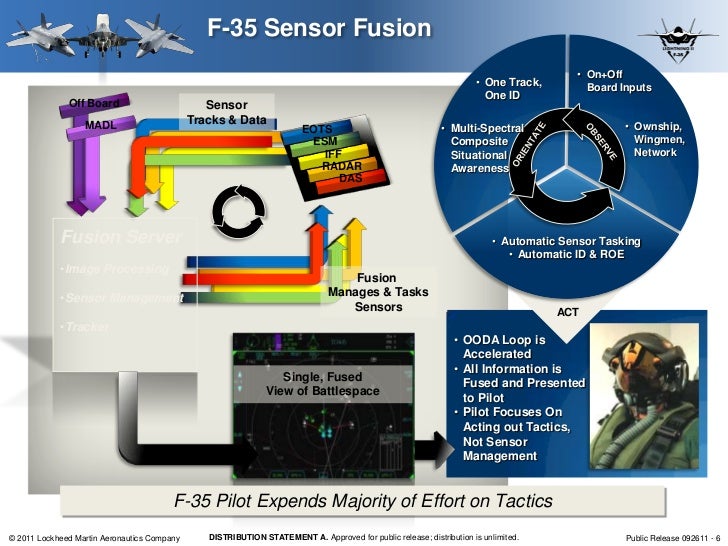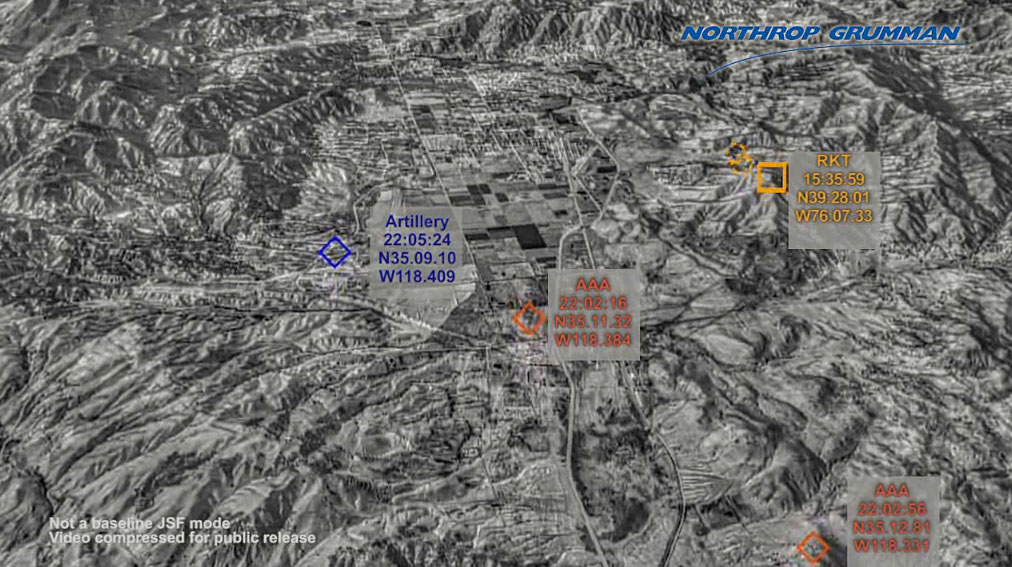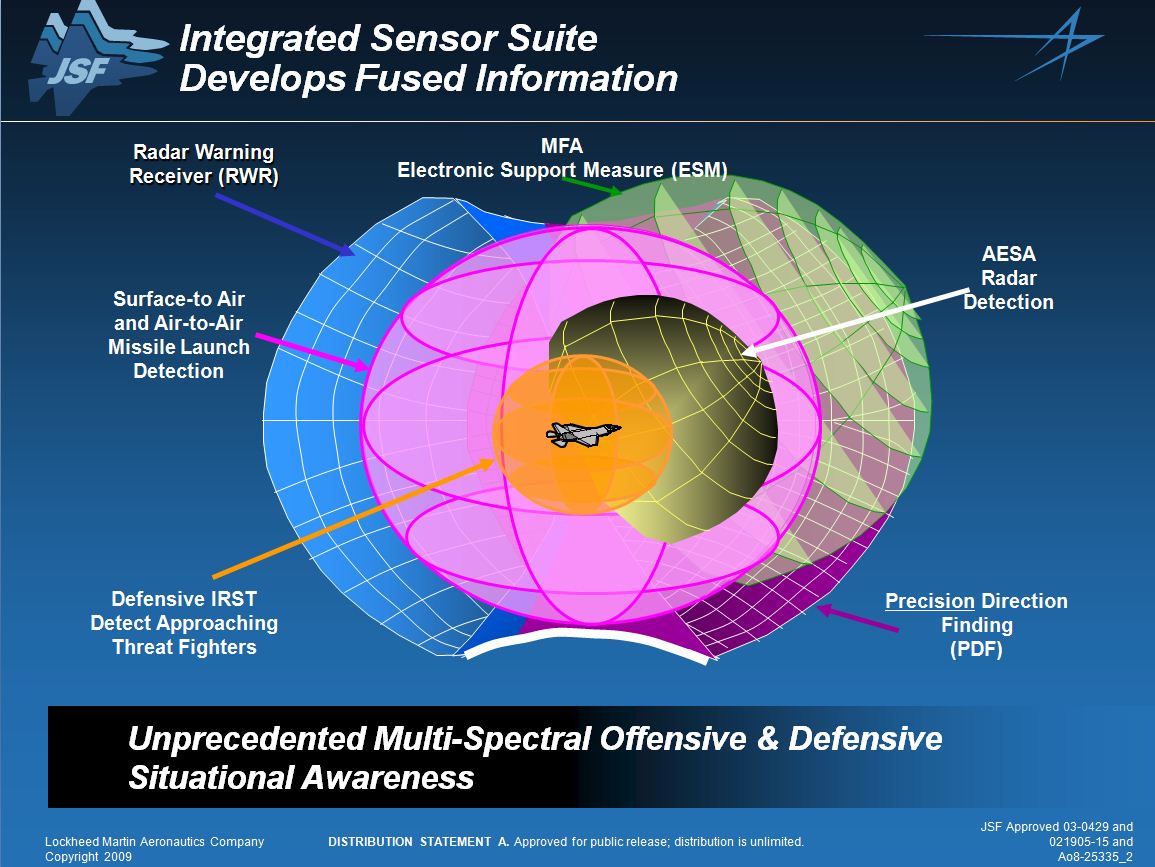LeGenD
MODERATOR

- Joined
- Aug 28, 2006
- Messages
- 15,813
- Reaction score
- 162
- Country
- Location
DISCLAIMER: During a discussion, I noticed that some people are misinformed about on-board technologies and capabilities of the F-35 series aircraft. So I will explain in this thread what F-35 is all about.
ON-BOARD SENSORS
AESA radar system (active)
Model: AN/APG-81
Developer: Northrop Grumman
Highlight: Engaging surface and airborne targets at long range.
The Distributed Aperture System (active)
Code: AN/AAQ-37
Developer: Northrop Grumman
Highlight: 360 degree spherical situational awareness (the first of its kind in aviation history)
The Electro-Optical Targeting System (passive via manual control; active via fusion)
Alternatively: TFLIR (targeting forward-looking infrared) with infrared search and track functionality
Code: AN/AAQ-40
Developer: Lockheed Martin
Highlight: Precision strikes
Stealthy attribute: Mounted inside the air-frame (reduction in radar cross-section and aerodynamic drag)

The Communications, Navigation, and Identification (CNI) Suite (passive via manual control; active via fusion)
Type: Software defined radios (IFF, VHF and UHF receive and transmit voice data)
Code: AN/ASQ-242
Developer: Northrop Gumman
Highlight: Network-centric communications (Link 16, MADL and more)

NOTE: F-35 aircraft is equipped with a physical radio (as a backup)
The Electronic Warfare Suite (active)
Code: AN/ASQ-239
Developer: BAE Systems
Highlight: Detection of surface and airborne threats and relevant countermeasures
SENSOR FUSION SYSTEM
This system represents the most innovative aspect of F-35 aircraft and is central to its design philosophy. The on-board sensors of the F-35 aircraft are electronically fused in order to work as a collective whole (i.e. Sensor Fusion Engine) and provide valuable feedback to the pilot in real-time (via) Tactical Situation Display (TSD) component of the on-board cockpit (C-5 ISR/D) and Helmet Mounted Display System (HMDS), during a military operation. The end-result is unparalleled 360 degree situational awareness and reduced workload for the pilot.


TRON warfare doctrine
If several F-35 aircraft are involved in the same military operation (a squadron), they can establish a knowledge-sharing network in which each F-35 aircraft is a sensor fusion node (C-5 ISR/D) for the other. In this setting, each F-35 aircraft complements the situational awareness of the other and makes it almost impractical for the enemy to compromise situation awareness of the entire squadron. This network-centric warfare strategy is dubbed as TRON warfare strategy.
F-35 is not just about stealth. Sensor Fusion System is central to its design philosophy and is a departure from traditional mechanics and information-sharing concepts in the older aircraft (5th generation in true sense of the word). With no second crew member, and the traditional head-up display replaced by a sophisticated helmet-mounted display as a component of Sensor Fusion System, F-35 is a class of its own.
REFERENCES
http://www.washingtonpost.com/sf/brand-connect/the-f-35-how-it-works/
http://www.sldinfo.com/whitepapers/the-f-35-and-advanced-sensor-fusion/
http://www.sldinfo.com/the-f-35-as-a-“flying-sensor-fusion-engine”-positioning-the-fleet-for-“tron”-warfare/
http://www.sldinfo.com/cni-and-madl-data-link-also-iocd-along-with-f-35b/
http://www.slideshare.net/robbinlaird/combat-systems-fusion-engine-for-the-f35
http://www.sldinfo.com/the-impact-o...5th-generation-fighters-on-combat-capability/
http://www.monch.com/mpg/news/12-c5i/499-c5isr-d-explained.html
ON-BOARD SENSORS
AESA radar system (active)
Model: AN/APG-81
Developer: Northrop Grumman
Highlight: Engaging surface and airborne targets at long range.
The Distributed Aperture System (active)
Code: AN/AAQ-37
Developer: Northrop Grumman
Highlight: 360 degree spherical situational awareness (the first of its kind in aviation history)
The Electro-Optical Targeting System (passive via manual control; active via fusion)
Alternatively: TFLIR (targeting forward-looking infrared) with infrared search and track functionality
Code: AN/AAQ-40
Developer: Lockheed Martin
Highlight: Precision strikes
Stealthy attribute: Mounted inside the air-frame (reduction in radar cross-section and aerodynamic drag)

The Communications, Navigation, and Identification (CNI) Suite (passive via manual control; active via fusion)
Type: Software defined radios (IFF, VHF and UHF receive and transmit voice data)
Code: AN/ASQ-242
Developer: Northrop Gumman
Highlight: Network-centric communications (Link 16, MADL and more)

NOTE: F-35 aircraft is equipped with a physical radio (as a backup)
The Electronic Warfare Suite (active)
Code: AN/ASQ-239
Developer: BAE Systems
Highlight: Detection of surface and airborne threats and relevant countermeasures
SENSOR FUSION SYSTEM
This system represents the most innovative aspect of F-35 aircraft and is central to its design philosophy. The on-board sensors of the F-35 aircraft are electronically fused in order to work as a collective whole (i.e. Sensor Fusion Engine) and provide valuable feedback to the pilot in real-time (via) Tactical Situation Display (TSD) component of the on-board cockpit (C-5 ISR/D) and Helmet Mounted Display System (HMDS), during a military operation. The end-result is unparalleled 360 degree situational awareness and reduced workload for the pilot.


TRON warfare doctrine
If several F-35 aircraft are involved in the same military operation (a squadron), they can establish a knowledge-sharing network in which each F-35 aircraft is a sensor fusion node (C-5 ISR/D) for the other. In this setting, each F-35 aircraft complements the situational awareness of the other and makes it almost impractical for the enemy to compromise situation awareness of the entire squadron. This network-centric warfare strategy is dubbed as TRON warfare strategy.
- INFORMATION SHARING RANGE: Concurrent with the pilot's own judgement which is limited by physical realities, the pilot will be able to “see” using cockpit electronic displays and signals to their helmet allowing them not to just fight with their individual aircraft but be able to network and direct engagements at 800+ miles in 360 Degrees of 3 dimensional space out to all connected platforms.
- EFFECTIVENESS IN NUMBERS: Suppose that an enemy is able to neutralize one of the on-board sensors of a single F-35 aircraft in a formation of several. The likelihood that the enemy will be able to do the same to another F-35 in the same formation is slim to none. Therefore, it is almost impractical for the enemy to defeat multiple sensors on multiple F-35 aircraft simultaneously.
- NETWORK-CENTRIC SENSOR FUSION CAPABILITY: Because the sensors between (and within) the F-35 aircraft are fused, the pilot in the affected aircraft can simply tap in to another aircraft’s sensor suite to get the desired information.
F-35 is not just about stealth. Sensor Fusion System is central to its design philosophy and is a departure from traditional mechanics and information-sharing concepts in the older aircraft (5th generation in true sense of the word). With no second crew member, and the traditional head-up display replaced by a sophisticated helmet-mounted display as a component of Sensor Fusion System, F-35 is a class of its own.
REFERENCES
http://www.washingtonpost.com/sf/brand-connect/the-f-35-how-it-works/
http://www.sldinfo.com/whitepapers/the-f-35-and-advanced-sensor-fusion/
http://www.sldinfo.com/the-f-35-as-a-“flying-sensor-fusion-engine”-positioning-the-fleet-for-“tron”-warfare/
http://www.sldinfo.com/cni-and-madl-data-link-also-iocd-along-with-f-35b/
http://www.slideshare.net/robbinlaird/combat-systems-fusion-engine-for-the-f35
http://www.sldinfo.com/the-impact-o...5th-generation-fighters-on-combat-capability/
http://www.monch.com/mpg/news/12-c5i/499-c5isr-d-explained.html
Last edited:








